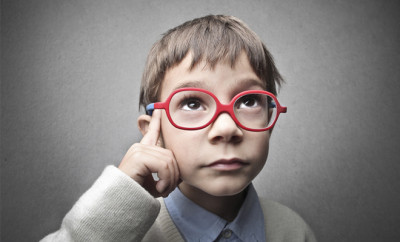
Lost Twin
It is not unusual for issues of twinning to arise in therapy. Psychoanalysts have described “twin transference” occurring in analysis, (Coen 1982) as a result of which a non-twinned client seeks to make the therapist into a twin companion. Co-dependency has been described as “the quest for one’s twin soul.” (Burney 1995) This article will explore some of the instances where twinning issues arise in therapy and how this is related to resistance in the client. I will set out a new hypothesis which is intended to shed new light on this difficulty.
Empathetic Failure
The concept of “empathetic failure” (Kohut 1966) is related to the twin-twin relationship, insofar as identical twins do seem to have an extremely empathic relationship with each other that is unspoken, and can border on the telepathic. (Kohl 2001) An identical twin would define empathetic failure as an extreme form of disappointment. This seems to be so with some clients, particularly those who are most resistant to change. In this case an extremely accurate kind of empathy is expected and anticipated, but of course cannot be provided, as the therapist is not clairvoyant.
Empathetic failure is described by some clients as the primary cause of their depression. In this case it is invariably an intimately related figure – parent, sibling or sexual partner – who has failed to display a sufficient level of empathy and this has caused great pain to the client. If the pain is related to the loss of a twin – the one person who could provide that level of empathy – then this response would make perfect sense. In the absence of a highly empathetic, deeply-connected style of relationship, such as many therapists enjoy with their clients, then the client concerned reacts with pain, disappointment and resentment at the failure of the therapeutic relationship. After much struggle and a great deal of supervision for the therapist, the relationship ends – not without some tinge of relief for the therapist, who is left feeling exhausted and questioning their effectiveness.
Resistance to Change
The therapeutic disaster described above may take many months, or even years, to eventuate: the client’s entire demeanour throughout the therapy is one of resistance. For instance, the seeming “lack of empathy” on the part of the therapist (despite years of training and great efforts to be as empathic as possible) is echoed by the client’s own lack of empathy for the therapist’s difficulties in understanding the client. The client makes no effort to empathise with the therapist’s requirement for clear understanding, to enable the relationship to deepen in mutual understanding. Rather, the client speaks in obscure metaphors and requires the therapist to be very good at guessing what the client truly means. Alongside this “guessing game,” the client greatly exaggerates – or even falsifies – tiny details related to the therapeutic encounter, or aspects of stories of life elsewhere and in another time.
Caught in a vague miasma of ideas and hidden agendas that seem too confusing to ever unravel, the therapist sinks into a passive listening mode born of sheer weariness. Now the client has achieved a state of therapeutic stasis that may continue indefinitely. In the end the therapist simply listens and provides support and validation to what appears to be the clients’ own personal idea of the truth – that, it appears, is what is most needed and that is what the client is paying for.
The Dream of the Womb
Pre and perinatal psychotherapists maintain that experiences in the womb and around birth leave some kind of impression in the mind of the fetus that remains throughout life. (Chamberlain 2007) These impressions are timeless, for there is no sense of time or chronology in the womb. They are formless, for they are formed before cognitive functioning is fully developed. They are confused, because there is no context within which they can be understood. They cannot be described as “memories” exactly, so I have called this mix of vague impressions, feelings, beliefs and attitudes the “Dream of the Womb.” It is my belief that the process of self understanding cannot be complete without some attempt to unravel the details of one’s own particular Dream of the Womb. The re-enactment of a “fetal mode of being” in psychotherapy has already been described. (Ploye 2006)
Until these vague impressions are given some cognitive context, they can only be expressed non-verbally. Until this is understood, the psychology of the individual is driven by the need to keep the Dream alive. These impressions are acted out in relationship, in terms of one’s sense of self, in various moods and feelings that are unrelated to the real situation, and in maladaptive behaviours. Only when the Dream is contextualised and fully interpreted in terms of a series of real events taking place in real time chronology, does the individual awaken from the Dream to the reality of their born life. This effect is particularly noticeable in the case of a “wombtwin survivor.”
Wombtwin Survivors
Wombtwin survivors are the sole survivors of a twin or multiple pregnancy. Statistical analysis of various studies of twin pregnancies has revealed an astonishing statistic: for every twin pair born alive there are at least 10 sole survivors of a twin or multiple pregnancy (Bocklage 1995.) It seems that most of this loss takes place before ten weeks of pregnancy: in other words, if you are a wombtwin survivor, before your mother was sure she was pregnant with you, she had lost a son or a daughter that she never knew and you had lost a twin brother or a sister.
The Lost Twin
The question is: does a wombtwin survivor carry any kind of impression of their lost twin? My research seems to indicate that they do. It seems that an imprint of the company we keep in the womb does remain, deeply rooted in the most primitive part of our brains. In five years of research with wombtwin survivors I have discovered that this impression is not in fact as vague as it may appear at first. By taking seriously the possibility that we all carry an impression of life in the womb, I have found that this imprint is a remarkably accurate picture. Wombtwin survivors spend their live constantly re-enacting their Dream of the Womb. Nothing is more important to them than that – even life itself. They will go to extraordinary lengths and choose to create all kinds of fantasies, simply to keep that Dream alive, for in the Dream is the twin soul they yearn for.
The Lost Twin in the Dream
The Dream is a strange place. It seems to be at the very back of the mind, as deep and primitive as can be – yet at the same time it is just behind the eyes and creates a kind of prism through which one sees the world and everything in it. It is a memory of long ago, yet it seems to be happening right now. It is a story about loss and being terribly alone deep inside, yet it is also a tale of love and intense connection, once known but now lost. This impression of Someone Else There, and also of Someone Else Gone Away, is a terrible muddle. When we were embryos, less than the size of a kidney bean and floating in half a wineglassful of amniotic fluid, we had a functioning brain but it was very primitive indeed. All we were capable of was a generalized vague awareness of our own sensations and events going on.
Physical Signs of a Lost Twin
Many wombtwin survivors have known all their lives that there was a twin pregnancy but they were the only baby born, or that their twin died close to birth. Despite research results to the contrary (Hepper 1996) the general consensus of opinion among psychologists and others appears to be that there cannot be any reliable memory of a twin at such an early stage of development – hence the discounting of any possibility that there can be any consequences of such an early loss. It is only in the field of pre and perinatal psychology that the possibility that a lost twin is causing psychological problems in adult hood has been routinely accepted.
Signs of a lost twin are made visible by means of ultrasound. The phenomenon of the “vanishing twin”, where two sacs are seen on an early scan but only one remains when a second scan is born, is now recognised as more common than anyone could have guessed. The survivors are beginning to identify themselves. Bleeding in the first trimester, or a pregnancy continuing after a miscarriage or abortion, are signs that a twin has been lost in pregnancy. (Landy 1998) Another sign may be gender confusion, which may be related to chimerism (ie. two distinct genetic lines within one body) which is known among twins. (van Dijk 1996) Less commonly, traces of the lost twin may be seen at birth as a fetus papyraceous or within the body of the survivor as a fetus in fetu. Some traces of a lost twin may be found in a teratoma or a dermoid cyst.
Psychological Signs of a Lost Twin
If one in every eight people is a wombtwin then there must be many millions of wombtwin survivors in the world. I set out to see if there were identifiable psychological effects in losing a twin before birth. I asked wombtwin survivors who contacted me via my website to rate various statements according to their personal experience. I analysed a set of 250 completed questionnaires and selected 115 with at least one known physical sign that they were the survivors of a twin pregnancy.
The five commonest psychological responses were:
- Deep down, I feel alone, even when I am among friends (70%)
- I have been searching for something all my life but I don’t know what it is (64%)
- I fear abandonment or rejection (62%)
- I know I am not realising my true potential (62%)
- All my life I have felt in some way “incomplete”(61%)
Feeling Alone
A deep-rooted sense of isolation is the commonest response among these respondents. The wombtwin survivor can feel alone even among others and may find being physically alone very hard indeed, yet paradoxically they deliberately keep themselves apart from others. They may avoid intimate relationships and may even re-enact the Dream of the Womb by sabotaging good relationships until they are left friendless and alone.
Searching
Some adult survivors report feeling restless, always changing their jobs or moving round the world and never staying anywhere very long. The search continues for Something that will make things right again. Sometimes some short-term respite is found, such as a satisfying job or a loving relationship, but very soon it is time to move on. To settle down and be “loved” feels like a prison. There must always be the chance to keep on moving. This is the search for the lost twin – who is lost and can never be found.
Abandonment or Rejection
Nothing causes more pain to a wombtwin survivor than to feel abandoned or rejected. This is just a bit to close to that original experience of being left alone in the womb and losing the closest relationship that Nature can provide. To pre-empt rejection by others, the survivor will constantly seek to appease and will risk becoming a victim of abuse. Rather than experience abandonment, the survivor will work hard to maintain a large group of loyal friends who will always be there, whatever may befall. Rather than be abandoned and left to manage alone, the survivor will remain in a relationship long after all hope is lost of any reconciliation.
Potential
The reenactment of the Dream involves the lost “beta” twin, who didn’t develop adequately but was too weak to survive. Incredibly, the surviving Alpha twin takes on the characteristics of the twin who didn’t make it and remains in some way undeveloped and unfulfilled. Some wombtwin survivors do not learn from their mistakes and do not get the best out of their situation in life but remain a shriveled fragment of the person they could be. It was in fact their wombtwin who ended up as the shriveled fragment. The survivor guilt that many wombtwin survivors feel acts as a drag on their personal development. They remain in a childlike state, acting like a petulant adolescent, depending on their parents yet yearning for autonomy. The hypochondriac wombtwin survivor lives like a helpless infant, terrified of illness and death yet unable to articulate what is wrong.
Incomplete
Many of the emails I receive mention a feeling of something missing. The sense of something missing requires a pre-existing sense of something there, which is now gone. The search for some way to fill the sense of lack – the space left by the missing twin – may take the survivor into an eating disorder or an addiction, both of which are common among wombtwin survivors. These activities are an attempt to heal the primal wound that lies in the Dream of the Womb, but they are also a gradual form of suicide. 57% of the respondents admitted that they regularly and willingly take part in activities that are potentially damaging to their health, wealth or well-being.
Healing the Primal Wound
The way forward for wombtwin survivors is to awaken from the Dream. I leave the description of this process to Kate, who has described her healing to me:
“Re-enacting the Dream in every moment of my life was a sane, logical and intelligent reason for doing crazy things and having strange ideas and feelings. Now I can see why I did this. But now I know another way. There is another way I can live – I can live in the truth – I can be me. To do this, I must let my twin go and let go of the Dream. In the light of this new information, this new honesty, I can see that the Dream no longer serves me. I created the fantasy that I could find my twin, that I could change what happened; that I could ‘make up for’ what happened; that if I controlled my world I could change what happened.
Today I must admit that my idea didn’t and couldn’t ever work – it has only brought me sorrow. I admit I was wrong but it was the best I could do at the time. I can do better now, with what I have learnt through the wombtwin work. I now release my guilt at being the survivor of events in the womb over which I had no control in the first place. I reclaim my power and move forward, step-by-step, to living at my full potential. It’s OK for me to be successful, abundant, loved and happy.”
Awakening from the Dream
For the client who is a wombtwin survivor, no matter how empathetic the therapist tries to be, he or she will complain about empathetic failure, either in the therapist or others, and will persist in self-sabotage of all kinds until the therapist gives up in despair, unable to help them further. The therapist could consider suggesting to clients like this that they check out their mother’s pregnancy for signs of a lost twin. Failing that, there are many Internet sites that describe the phenomenon of the vanished twin. It may be that some of this information will resonate with some of these clients. This insight may provide for them a sane rational and intelligent – even loving – reason for far too many years of being isolated, restless, fearful of rejection and self-sabotaging. The wombtwin hypothesis can open the door for resistant clients to a new approach, which may enable change at last. Hopefully, they will begin to understand that they have been keeping a Dream alive, which is to do with events long ago. It’s time to wake up and begin to live life to the full.
First published at iahip.org.







